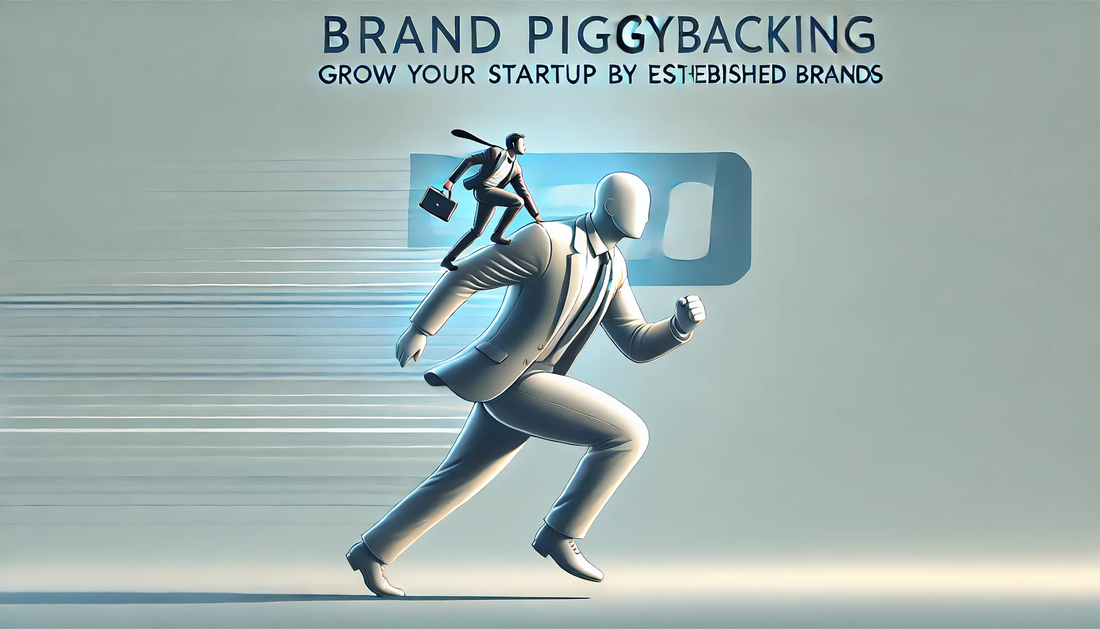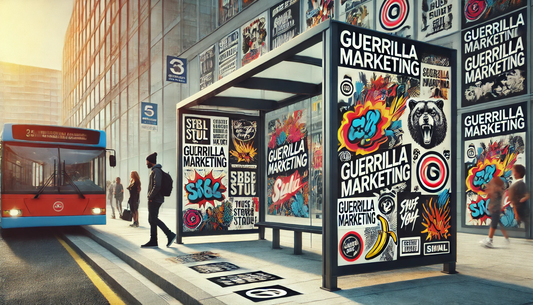🚀 Introduction to Brand Piggybacking 🤝
🌟 Brand piggybacking is a marketing strategy where startups leverage the brand power of more established companies to gain visibility, credibility, and growth.
For startups with limited resources, it's an effective way to ride the wave 🌊 of a well-known brand, tapping into its audience and trust.
💡 This approach helps startups cut through the noise in a crowded marketplace 🏙️, especially when budgets are tight 💰. By associating with an established brand, startups can instantly gain recognition 🌐 and trust without having to build it from scratch.
🔥 Top 10 Real-Life Examples of Brand Piggybacking Success 🌟
- 🏠 Airbnb with Travel Influencers: Airbnb gained traction by collaborating with travel influencers 🌎, making it a trusted platform for travelers.
- 📥 Dropbox with Microsoft Integration: Dropbox integrated with Microsoft Office 💻, increasing visibility among Microsoft’s user base.
- 🍔 Beyond Meat at Restaurant Chains: Beyond Meat partnered with fast-food giants like McDonald's 🍟, boosting awareness through established brands.
- 🛒 Amazon and Whole Foods Collaboration: Amazon’s partnership with Whole Foods 🥑 allowed the brand to access a new customer base in grocery retail.
- 📈 HubSpot with LinkedIn: HubSpot joined forces with LinkedIn 💼, reaching a larger audience in professional networking.
- 📲 Spotify and Hulu Bundle: Spotify’s bundle deal with Hulu 🎬 expanded its reach by leveraging Hulu’s entertainment audience.
- 🕹️ Twitch with Amazon Prime: Twitch gained massive exposure after its acquisition and collaboration with Amazon Prime 🎮.
- 🚲 Peloton’s Apple Watch Integration: Peloton increased accessibility by integrating with Apple Watch 📱, drawing Apple’s health-conscious users.
- 🖼️ Canva with Google Suite: Canva’s integration with Google Drive 🗂️ boosted its usage among Google Suite’s users.
- 📸 Snapchat Filters with Disney: Snapchat’s branded Disney filters 🏰 attracted Disney fans, enhancing user engagement.
🔍 How Brand Piggybacking Works 💡
🛠️ Startups can partner with or collaborate on campaigns with established brands, allowing them to “borrow” the brand equity of the larger company.
This association increases exposure 📢 as the startup is seen alongside the bigger name, leading to new customer acquisition and credibility.
This might happen through co-branding 🤝, joint promotions 🎉, or simply being featured as a partner on the established brand’s platforms. By aligning with a trusted brand, the startup creates a perception of quality ⭐ and reliability.
💪 Benefits for Startups 💪
- 💸 Lower marketing costs: No need to spend heavily 💵 on creating your own buzz when you can share the limelight ✨ with a bigger brand.
- 🌐 Access to a larger audience: Tap into the audience of the established brand, reaching more potential customers 📈.
- ✅ Credibility: Association with a well-known brand boosts your startup's trust factor, speeding up your credibility in the market 🔥.
⚠️ Challenges and How to Overcome Them ⚠️
🔍 Like any strategy, brand piggybacking comes with its challenges. Startups need to ensure brand alignment 🎯 so that the partnership feels authentic. Partnering with the wrong brand can confuse customers or dilute your startup’s message 📉.
Another challenge is competition for attention 👀. In a piggybacking situation, the established brand is still the main attraction. Startups need to position themselves effectively by offering something unique 🌟 and valuable to the audience.
To overcome these challenges, startups should:
- 🤔 Choose a partner with shared values and target audience.
- 💎 Highlight what makes their offering distinct in joint promotions.
- ⚖️ Ensure that the collaboration serves both brands equally to avoid overshadowing.
📚 Real-Life Examples or Case Studies 📚
A classic example of brand piggybacking is how Airbnb partnered with established travel companies 🧳 and influencers early on. By leveraging the trust of well-known travel bloggers and platforms, Airbnb quickly gained recognition 🏆 and credibility, catapulting it to success.
Another example is Dropbox, which used a piggyback strategy by integrating with tech giants like Apple 🍏 and Microsoft 💻, leading to rapid user growth and visibility.
📝 Step-by-Step Guide to Implementing Brand Piggybacking 📝
- 🔍 Identify potential partners: Look for brands that align with your values and target audience.
- 📧 Reach out: Propose mutually beneficial collaborations that add value to both parties 💬.
- 🎯 Co-create campaigns: Plan marketing campaigns where both brands are prominently featured, whether it’s through co-branding, joint events, or cross-promotions 🤝.
- 📲 Leverage each other’s platforms: Promote the collaboration through social media, email marketing, and other channels to maximize visibility 📣.
- 📊 Monitor and adjust: Track performance and refine your approach to optimize results 📈.
💥 Tips for Maximizing Results 💥
- 🎯 Be selective: Don’t just piggyback on any brand. Ensure your values and audience are aligned 🤝.
- 💡 Create value: Ensure your contribution is meaningful and not just a free ride 🚀.
- 🤝 Focus on long-term relationships: Building lasting partnerships with established brands can lead to more collaborations in the future 🔄.
- 📈 Monitor metrics: Track the success of the partnership by looking at metrics like website traffic, lead generation, and social media growth 📊.
🔚 Conclusion 🔚
🌐 Brand piggybacking is a powerful growth strategy for startups looking to boost visibility and credibility without the heavy costs of traditional marketing.
By carefully choosing the right partners and executing joint promotions, startups can accelerate their growth 🚀 and make a name for themselves in the industry. Start leveraging the power of established brands today and watch your startup rise to new heights 🌄!










